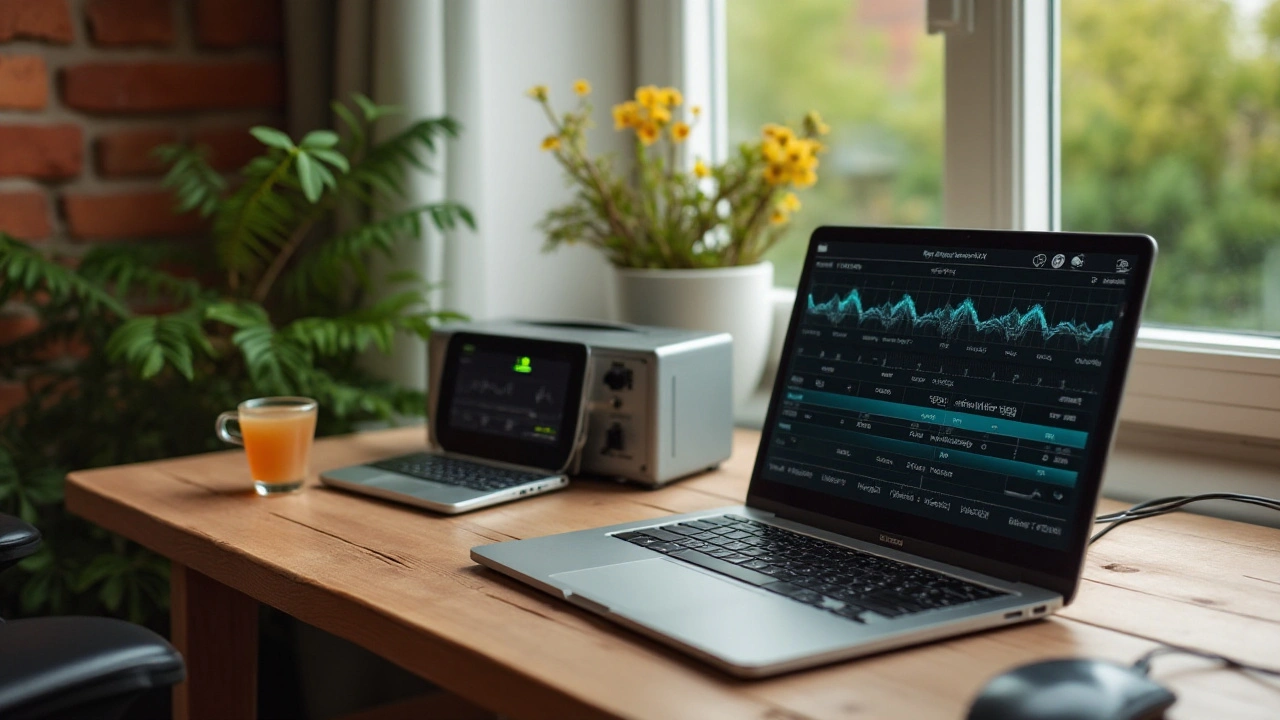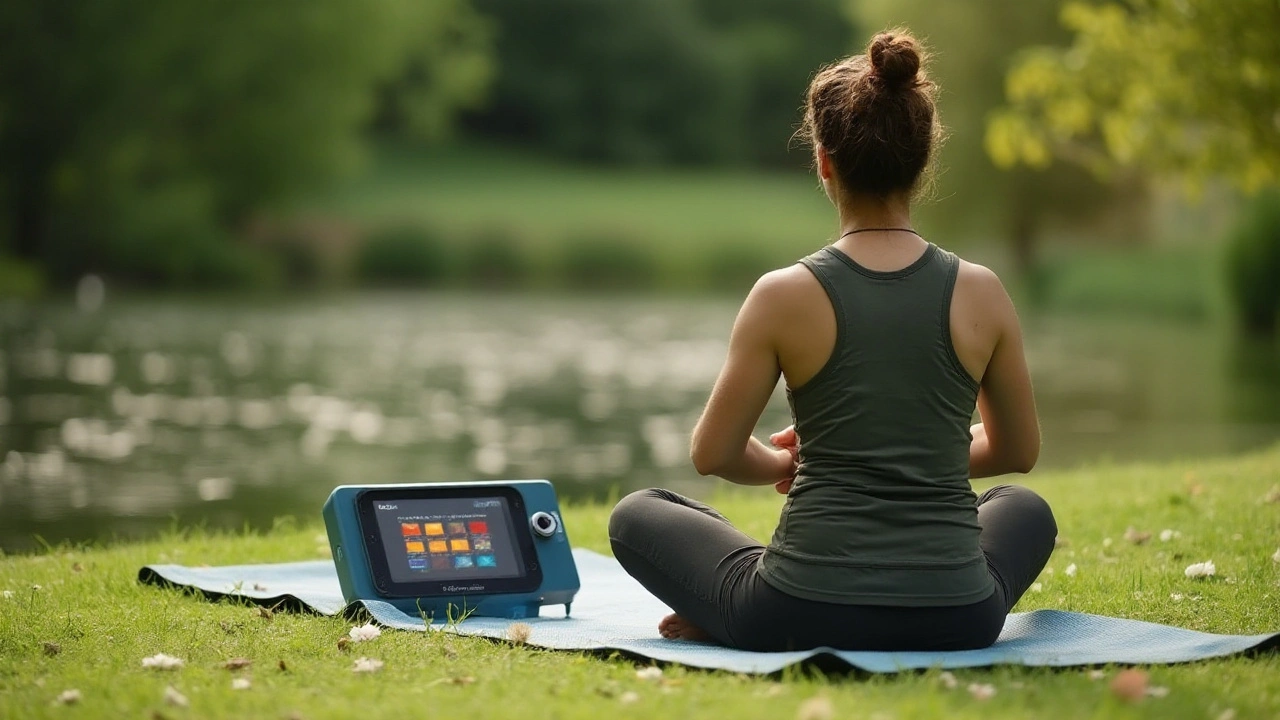Biofeedback is an innovative method that enables individuals to gain control over their physiological processes in order to enhance mental and physical well-being. By learning to manipulate bodily functions such as heart rate, muscle tension, and breathing, people can alleviate symptoms of stress, anxiety, chronic pain, and more.
In this ultimate guide, we'll dive into what biofeedback is all about, explore its wide range of benefits, and provide you with practical techniques and tools to incorporate biofeedback into your life. Whether you're looking to manage stress better, improve mental focus, or tackle specific health concerns, biofeedback offers a science-backed solution that can be life-changing.
Read on to learn how you can unlock the power of biofeedback and take control of your health today!
- Understanding Biofeedback
- Benefits of Biofeedback
- Common Techniques and Tools
- Getting Started with Biofeedback
Understanding Biofeedback
Biofeedback is a mind-body technique that involves using visual or auditory feedback to gain control over involuntary bodily functions such as heart rate, muscle tension, and blood flow. It’s based on the principle that with the right information, individuals can learn to influence their physiological states and, consequently, their health. The term 'biofeedback' itself refers to biological data (bio) that is 'fed back' to the patient, often through devices that measure and display information about bodily functions.
Biofeedback has its roots in the 1960s, when researchers began discovering that people could manipulate physiological processes traditionally considered involuntary. Since then, the practice has evolved into a mainstream method for treating various conditions. A 2017 review published in Applied Psychophysiology and Biofeedback found that biofeedback helps alleviate symptoms of conditions such as anxiety, depression, chronic pain, and even hypertension.
"Biofeedback provides individuals with the data to monitor their physiological functions and empowers them to take an active role in their own health management," says Dr. John Basmajian, a pioneer in the field.
So, how does biofeedback work? Essentially, it relies on sophisticated sensors attached to the body, which might measure brain waves (EEG), heart rate (ECG), muscle tension (EMG), or skin temperature. This biological information is then fed back in real time via a monitor or an auditory signal. By observing these readings, individuals can learn to make subtle changes to influence desired outcomes. For instance, slowing down the breathing rate can lead to a calmer state, which is especially beneficial for those dealing with panic attacks.
Types of Biofeedback
There are several types of biofeedback, each with a specific focus:
- Electromyography (EMG): Measures muscle tension and is commonly used for treating tension headaches, back pain, and other muscle-related conditions.
- Thermal biofeedback: Monitors skin temperature, aiding in the treatment of conditions like Raynaud's disease and migraine headaches.
- Neurofeedback (EEG): Tracks brain wave activity to assist in managing ADHD, depression, and anxiety disorders.
- Heart rate variability (HRV): Focuses on the variations in time between heartbeats, often used for managing chronic stress and promoting cardiovascular health.
- Galvanic skin response (GSR): Measures the electrical conductance of the skin, which varies with sweat gland activity, useful in stress and emotional response studies.
Getting started with biofeedback doesn’t require expensive equipment. While professional sessions are incredibly helpful, various consumer-grade devices and apps are now available. Many of these tools offer similar benefits and can be used comfortably at home. Learning to use these devices effectively often involves guidance from a trained biofeedback therapist, especially in the initial stages.
Biofeedback stands out not just for its scientific backing but also for its ability to meet the specific health needs of each individual. Whether you're aiming for mental health improvements, better management of chronic conditions, or enhanced athletic performance, biofeedback offers a tailored approach driven by real-time data.

Benefits of Biofeedback
Biofeedback has garnered attention for its ability to help individuals manage a wide array of conditions by increasing their awareness and control over physiological processes. This non-invasive technique provides valuable insights into how your body functions, empowering you to make healthier choices and achieve specific health goals. Here are some key benefits of biofeedback:
Stress Reduction and Anxiety Management
One of the most significant benefits of biofeedback is its effectiveness in managing stress and anxiety. Through real-time feedback, individuals can learn to regulate their heart rate, muscle tension, and breathing patterns, which are commonly affected by stress and anxiety. Research studies have shown that biofeedback can lead to reduced cortisol levels, a key stress hormone, resulting in a calmer and more balanced state of mind.
According to a study published in the Journal of Clinical Psychology, biofeedback has been found effective in reducing anxiety symptoms by up to 50% in participants who practiced biofeedback techniques regularly. By understanding the physiological signals associated with stress, individuals can intervene early and prevent stress from escalating into anxiety or panic attacks.
Chronic Pain Relief
Biofeedback is also a powerful tool for managing chronic pain conditions like migraines, tension headaches, and fibromyalgia. By learning to relax specific muscle groups and regulate bodily functions, individuals can alleviate pain without relying solely on medications. Studies have documented improvements in pain severity and frequency through the consistent use of biofeedback methods.
A 2020 study in the journal Pain Management found that patients who underwent biofeedback therapy for chronic pain had a significant reduction in pain intensity and frequency. The ability to control physiological responses to pain through biofeedback offers a promising alternative for those seeking non-pharmaceutical pain management options.
Improved Mental Focus and Performance
In addition to its therapeutic benefits, biofeedback can enhance mental focus and cognitive performance. Athletes, musicians, and professionals in high-stress occupations often use biofeedback to optimize their performance by maintaining a calm and centered state. This increased mental clarity can lead to better decision-making, improved concentration, and higher productivity.
"Biofeedback is a game-changer for athletes looking to achieve peak performance. By harnessing the power of biofeedback, we can train our minds and bodies to perform at optimal levels, both physically and mentally." – Dr. Laura Smith, Sports Psychologist
Biofeedback training often includes techniques such as heart rate variability (HRV) training, which has been shown to improve focus, reaction times, and overall cognitive function. As a result, individuals can perform better under pressure and maintain a higher level of mental agility.
Cardiovascular Health
Another critical benefit of biofeedback is its positive impact on cardiovascular health. By learning to control heart rate and blood pressure through biofeedback, individuals can reduce their risk of heart disease and other cardiovascular conditions. Biofeedback techniques have been found to be particularly effective in lowering high blood pressure, a common risk factor for heart attacks and strokes.
A 2018 study published in the Journal of Cardiovascular Medicine concluded that biofeedback-assisted relaxation techniques resulted in significant reductions in systolic and diastolic blood pressure in participants with hypertension. These findings highlight the potential of biofeedback as a complementary approach to traditional cardiovascular treatments.
Better Sleep Quality
For those struggling with sleep disorders, biofeedback can offer a natural and effective solution. By addressing underlying factors that contribute to poor sleep, such as stress and muscle tension, biofeedback can help individuals achieve better sleep quality. Techniques like guided imagery and progressive muscle relaxation, often used in biofeedback sessions, can promote restful sleep and improve overall sleep patterns.
A study in the journal Sleep Medicine Reviews found that biofeedback interventions significantly improved sleep quality and duration in individuals with insomnia. By fostering a deeper understanding of the factors that disrupt sleep, biofeedback empowers individuals to create a conducive environment for restorative rest.

Common Techniques and Tools
Biofeedback is an exciting approach, offering a variety of techniques and tools that help people take control over their physiological functions. Let's dive into some of the most commonly used methods and the equipment involved.
Electromyography (EMG) Biofeedback
EMG biofeedback measures muscle activity and is instrumental in treating issues such as chronic pain, tension headaches, and even rehabilitation from injuries. Electrodes are placed on the skin to detect electrical activity in the muscles, and this information is displayed on a screen. Through visual and auditory cues, you can learn to relax specific muscles, leading to a reduction in pain and tension.
Heart Rate Variability (HRV) Biofeedback
HRV biofeedback deals with the interval between heartbeats and is often used to manage stress and anxiety. The technique involves sensors that measure heart rate and breathing patterns. Feedback is given through real-time displays, where users can visualize their heart rate patterns and work to bring them to a more coherent state. Techniques such as deep breathing and guided imagery are often incorporated to aid in achieving optimal HRV levels.
Thermal Biofeedback
This type of biofeedback measures skin temperature and is primarily used for conditions like Raynaud's disease and migraines. The core idea is that as you relax, your blood flow improves, and your skin temperature increases. A sensor attached to your fingers or feet tracks these temperature changes, and you can employ relaxation techniques to help enhance your blood flow and reduce symptoms.
Neurofeedback (EEG) Biofeedback
Neurofeedback, also known as EEG biofeedback, monitors brainwave patterns and is widely used for treating ADHD, insomnia, and other cognitive disorders. Electrodes are placed on the scalp to measure brainwave activity, and this data is fed back to you in the form of visual or auditory cues. Through practice, you can learn to alter your brainwave activity, improving focus, relaxation, and cognitive function.
Galvanic Skin Response (GSR) Biofeedback
GSR biofeedback measures the electrical conductance of the skin, which varies with its moisture level. This technique is used mainly to assess emotional arousal and stress levels. Sensors are placed on the fingers to monitor skin conductance, and feedback is provided through graphics or sounds. By learning to control their emotional responses, people can reduce stress and anxiety.
"Biofeedback is a process that enables an individual to learn how to change physiological activity for the purposes of improving health and performance." – Association for Applied Psychophysiology and Biofeedback
Tools and Devices
There are several tools and devices designed to facilitate biofeedback training at home. From sophisticated medical equipment to user-friendly gadgets, the options are numerous. Wearable devices like fitness trackers often come with basic biofeedback capabilities, such as monitoring heart rate and encouraging regular breathing exercises. Mobile apps can also provide guided sessions and track your progress, making it easier to incorporate biofeedback into daily life. Professional-grade biofeedback machines are available for more intensive training sessions, often used in therapeutic settings to address specific health conditions.
By understanding these techniques and tools, you can better decide which type of biofeedback might be most beneficial for you. Whether you're looking to manage stress, improve focus, or alleviate chronic pain, biofeedback offers a range of solutions that can empower you to take control of your health and well-being. The key is to be consistent with your practice and to seek guidance from a qualified professional if you're just starting out.

Getting Started with Biofeedback
Beginning your journey with biofeedback can seem a bit overwhelming at first. However, with a bit of guidance and a willingness to practice, everyone can benefit from this technique. The first step is understanding the basics and setting clear, attainable goals for your biofeedback sessions. Many people find great success in working with a certified biofeedback therapist initially, guiding them through the early stages of the process.
Before your first biofeedback session, it is useful to pinpoint the specific areas you wish to improve. Whether you're dealing with chronic pain, high levels of stress, or you want to improve mental focus, clearly identifying your goals will help guide the biofeedback process. Once your goals are set, you can choose the type of biofeedback that aligns with your needs—be it heart rate variability biofeedback, thermal biofeedback, or neurofeedback, to name a few.
During a typical biofeedback session, sensors will be attached to your body to measure various physiological functions. These can include your heart rate, muscle tension, skin temperature, and more. The sensors provide real-time feedback, usually displayed on a monitor, which allows you to see and consciously control these bodily processes. Over time, this practice helps you to develop a better awareness of how your body responds to different stimuli and stressors.
For those who prefer a DIY approach, there are plenty of biofeedback tools and software that can be used at home. Devices like wearable heart rate monitors or apps that track your breathing patterns can be incredibly effective. It's essential to choose equipment that is user-friendly and comes with clear instructions to help you get the most out of your biofeedback sessions. Many of these tools are customizable, meaning you can tailor your session lengths and focus areas according to your specific needs.
After each session, take a few minutes to reflect on what you learned about your body's responses. Keep a journal to note any significant changes or improvements in your symptoms. Developing a regular routine for biofeedback can amplify its benefits, making it easier to manage stress, reduce chronic pain, and improve overall mental health. Remember to be patient with yourself as the process of learning to control these physiological functions takes time and practice.
Biofeedback is highly beneficial for improving physical and mental health, and a significant amount of scientific evidence supports its effectiveness. According to Dr. Paul Lehrer, a well-known figure in the field, “Biofeedback can empower individuals by giving them control over bodily functions that are usually involuntary. It has proven effective for a wide range of conditions and can be a powerful addition to traditional medical treatments.”
Ultimately, getting started with biofeedback does not require specialized skills—just commitment and regular practice. As you become more proficient, you’ll likely notice improvements in your symptoms and overall well-being. If you need additional support, don't hesitate to consult a professional to ensure that you're on the right track.
